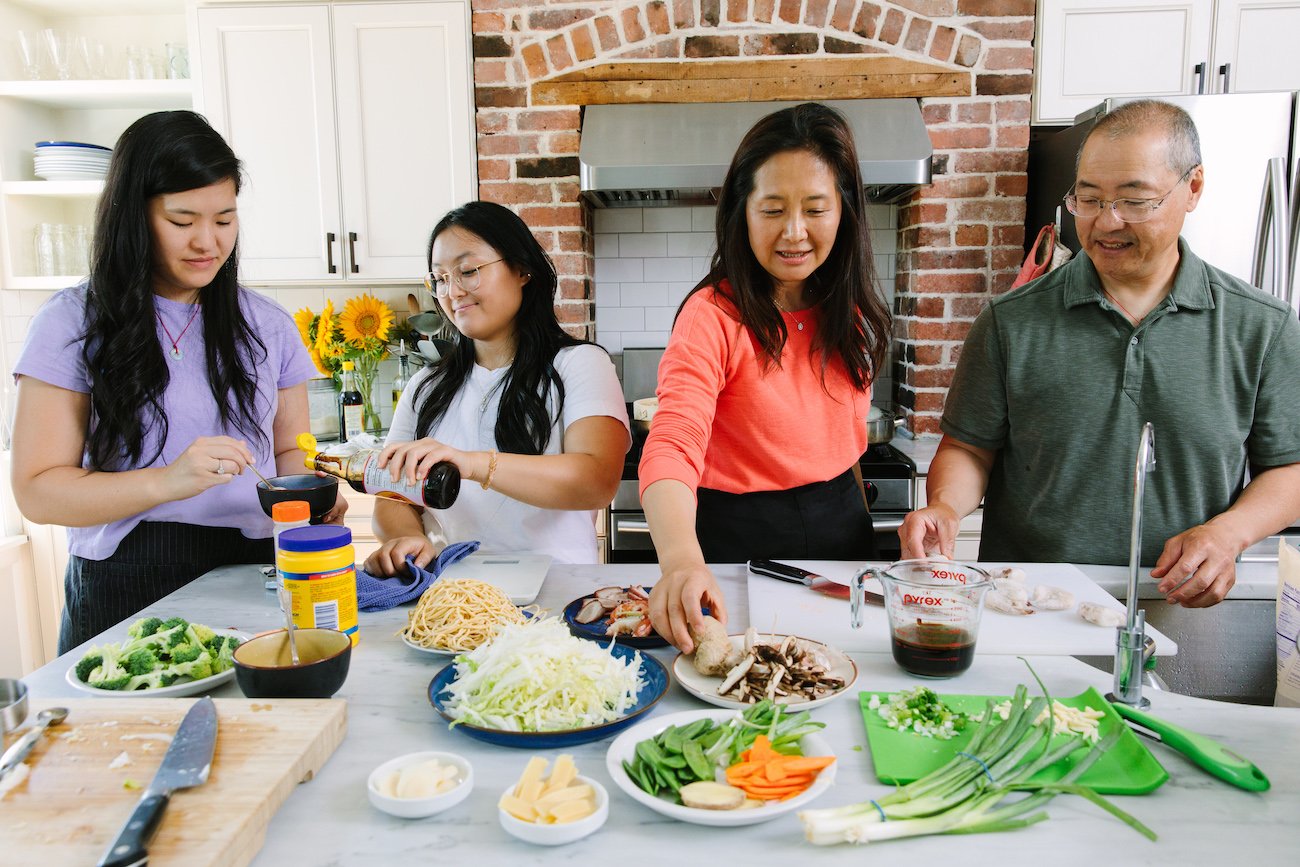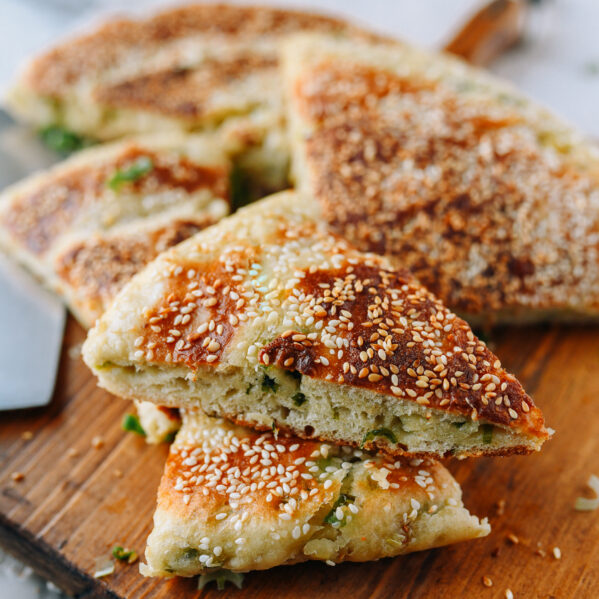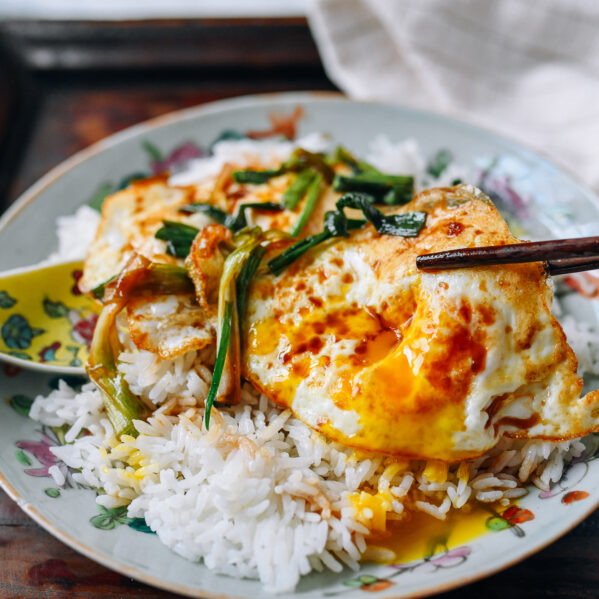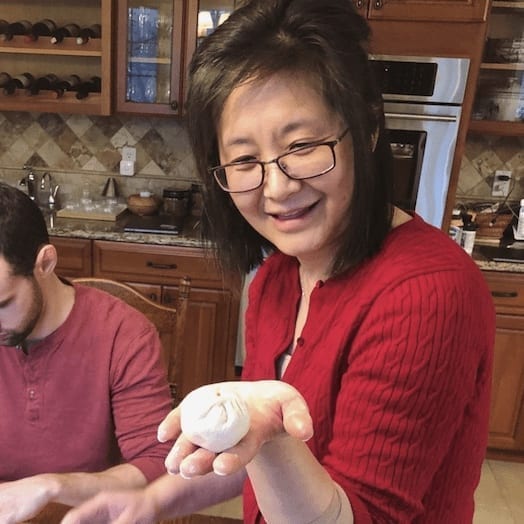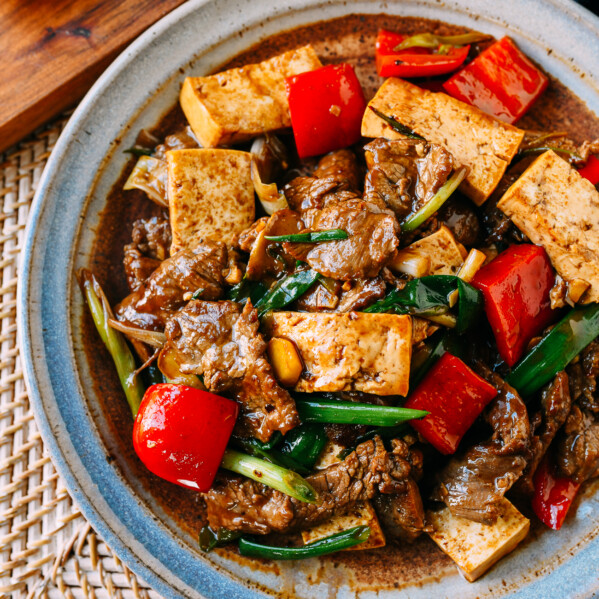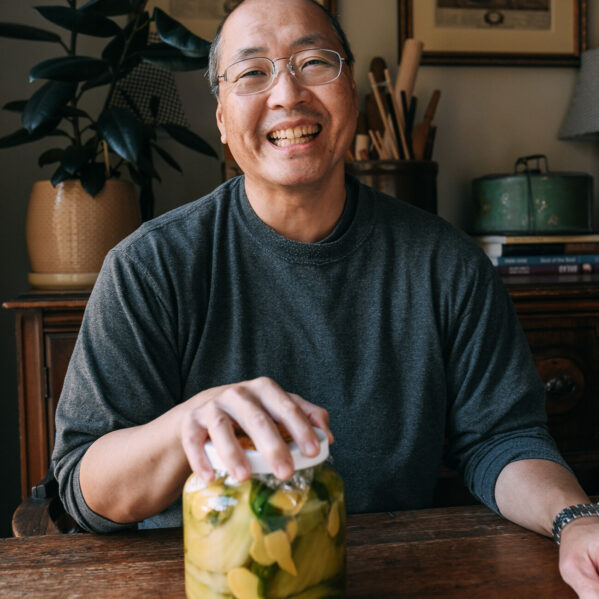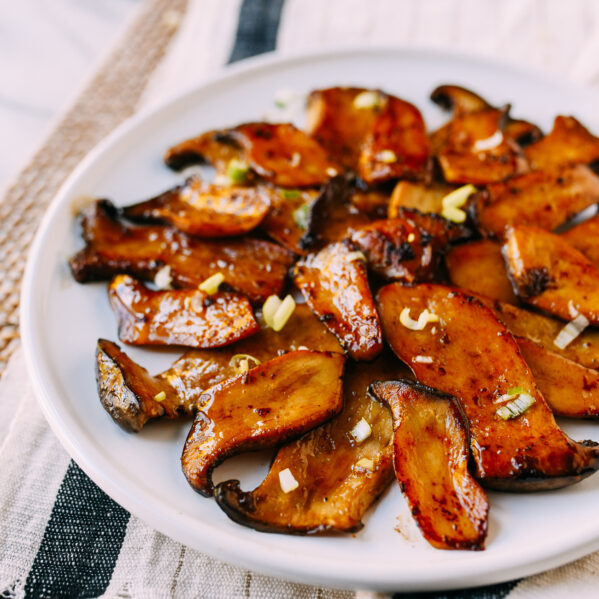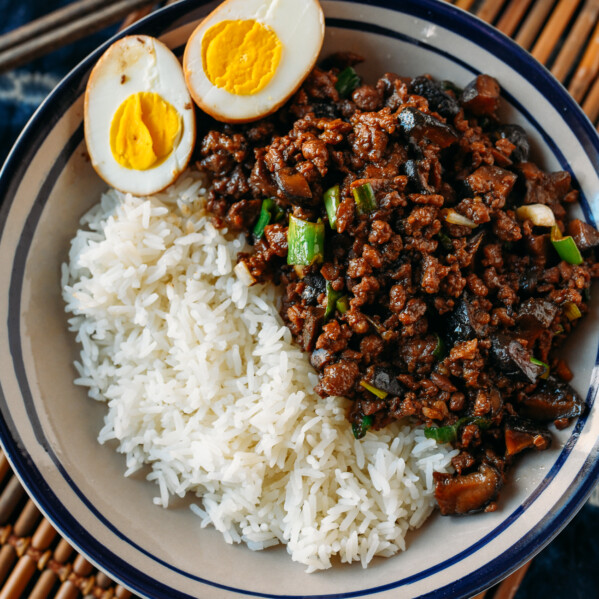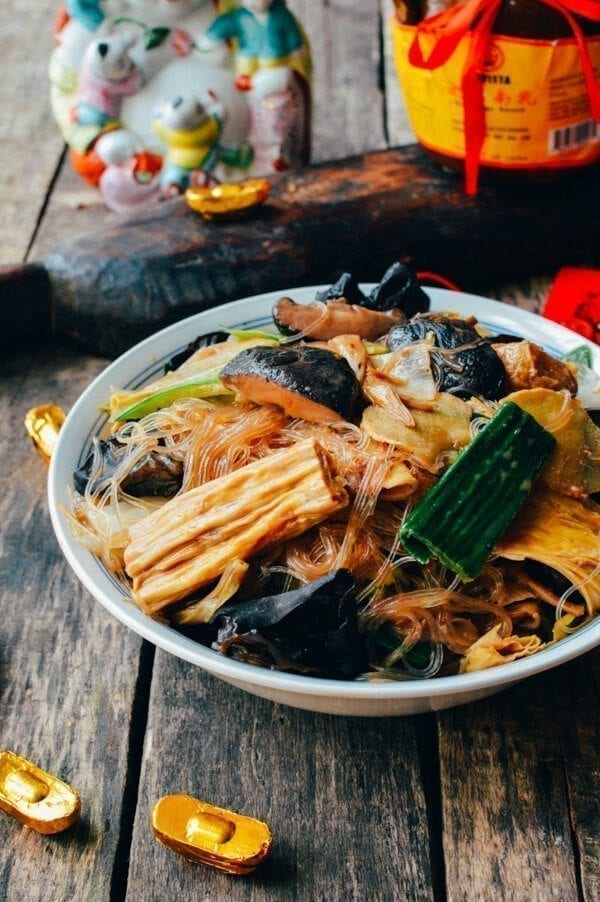
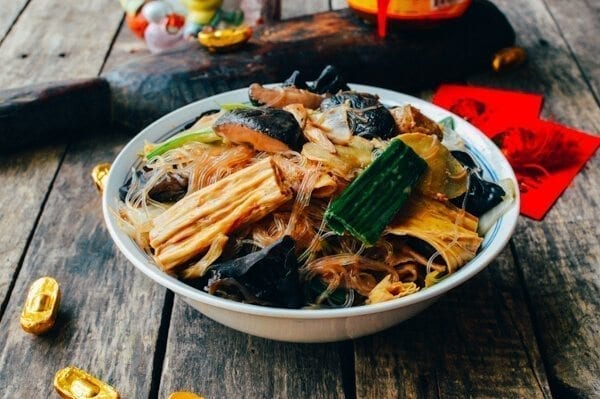 My arrival always begins with Chinese New Year greetings and wishes of health, happiness and long life (and of course a red envelope of lucky money). Long gone are the days when I only used to get red packets from her when I was a kid. Once I married, the roles reversed, and it was the elderly’s turn to receive the lucky red envelopes from me and my sisters.
My arrival always begins with Chinese New Year greetings and wishes of health, happiness and long life (and of course a red envelope of lucky money). Long gone are the days when I only used to get red packets from her when I was a kid. Once I married, the roles reversed, and it was the elderly’s turn to receive the lucky red envelopes from me and my sisters.
 But some things never change, and heading over to the kitchen for a small bowl of rice with lo han jai still follows. Memories abound whenever I step into that apartment, where she’s lived for over 50 years.
The list of ingredients for Buddha’s Delight is long, and it’s totally up to personal preference which ingredients you choose to use. I figured it would be useful for you all to have a list of ingredients that are typically found in Buddha’s Delight (below). Our recipe only uses 8 of them, but extra ingredients can always be added or subtracted, depending upon availability and preference.
Common ingredients found in Buddha’s Delight:
But some things never change, and heading over to the kitchen for a small bowl of rice with lo han jai still follows. Memories abound whenever I step into that apartment, where she’s lived for over 50 years.
The list of ingredients for Buddha’s Delight is long, and it’s totally up to personal preference which ingredients you choose to use. I figured it would be useful for you all to have a list of ingredients that are typically found in Buddha’s Delight (below). Our recipe only uses 8 of them, but extra ingredients can always be added or subtracted, depending upon availability and preference.
Common ingredients found in Buddha’s Delight:
- Arrowroot(慈菇; cí gū)
- Bamboo shoots (笋; sǔn)
- Bean curd sticks or bean threads (腐竹; fǔ zhú)
- Black mushrooms (冬菇; dōnggū)
- Cellophane or mung bean noodles (粉絲; fěn sī)
- Day lily buds (金针; jīnzhēn)
- Fat choy (Cantonese) or black moss (发菜; fà cài)
- Ginkgo nuts (白果; bái guǒ)
- Lotus seeds (蓮子; liánzǐ)
- Napa cabbage (大白菜; dà bái cài)
- Peanuts (花生; huā shēng)
- Fried tofu (炸豆腐; zhá dòu fǔ)
- Water chestnuts (荸荠; bí qí)
- Fried or braised wheat gluten (面筋; miàn jīn)
- Fried tofu puffs (油豆腐; yóu dòu fu)
- Wood ear or black fungus (木耳; mù ěr)
- Red dates or jujubes (红枣; hóng zǎo)
- Lotus root (藕; ǒu)
- chives (韭菜; jiǔ cài)
- snow pea (荷兰豆; hé lán dòu)
- soy bean sprout (豆芽; dòu yá)
- carrots (胡萝卜; hú luó bo)
- baby corn (玉米笋; yù mǐ sǔn)
- leek (蒜苗; suàn miáo)
Buddha’s Delight: Recipe Instructions
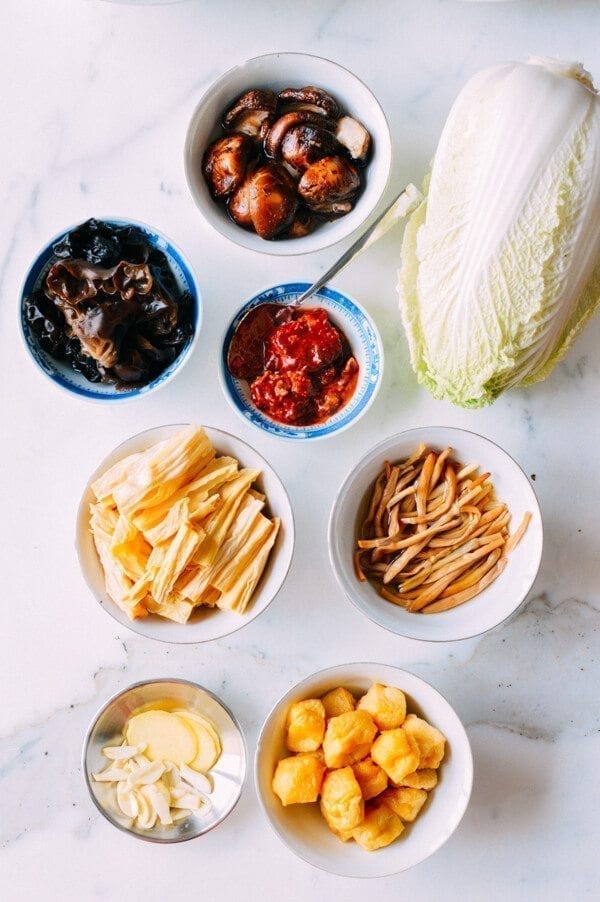
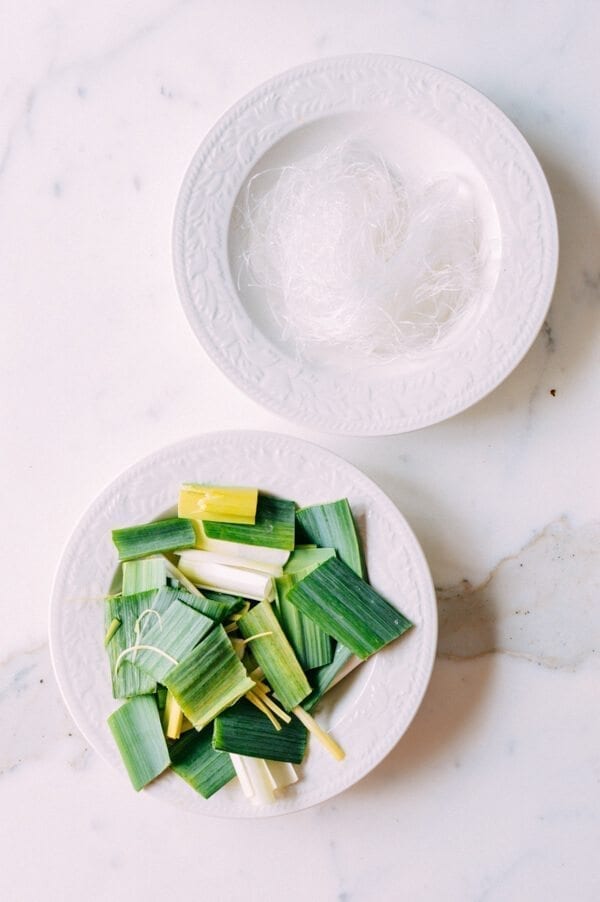 Heat your wok over medium-high heat, and add the oil and ginger. Let the ginger caramelize for about 30 seconds without letting it burn. Add the red fermented bean curd and break it up with your spatula.
Heat your wok over medium-high heat, and add the oil and ginger. Let the ginger caramelize for about 30 seconds without letting it burn. Add the red fermented bean curd and break it up with your spatula.
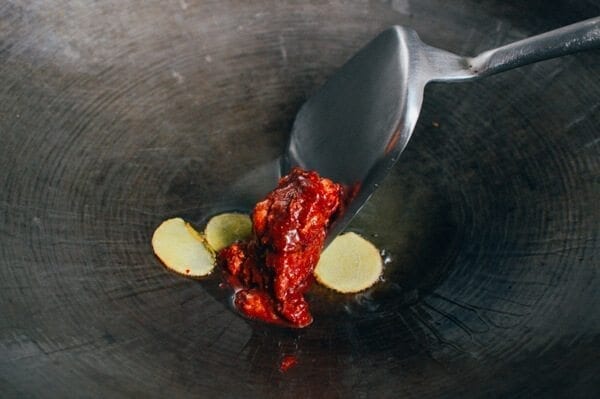 Add the garlic, the white portions of the leeks (reserve to green portion for later), mushrooms, wood ears, and lily flowers. Stir-fry for 1 minute. Add the Shaoxing wine and stir fry for another minute.
Add the garlic, the white portions of the leeks (reserve to green portion for later), mushrooms, wood ears, and lily flowers. Stir-fry for 1 minute. Add the Shaoxing wine and stir fry for another minute.
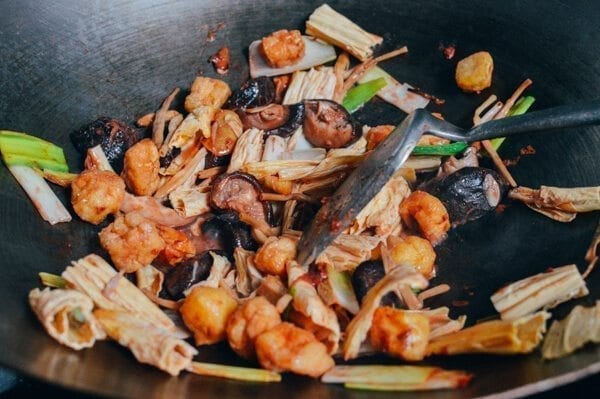 Next, add the Napa cabbage, fried tofu puffs, and bean threads, and crank up the heat as high as it will go. Stir-fry for 2 minutes.
Add the remaining green portion of the leeks, sesame oil, soy sauce, sugar and water or vegetable stock. Stir everything together, cover the wok, and reduce the heat to medium. Cook for 6 minutes, stirring occasionally.
Next, add the Napa cabbage, fried tofu puffs, and bean threads, and crank up the heat as high as it will go. Stir-fry for 2 minutes.
Add the remaining green portion of the leeks, sesame oil, soy sauce, sugar and water or vegetable stock. Stir everything together, cover the wok, and reduce the heat to medium. Cook for 6 minutes, stirring occasionally.
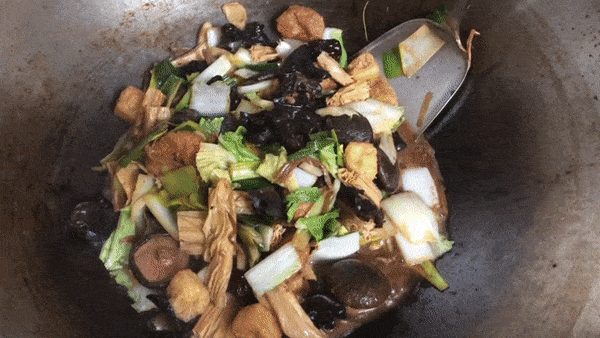 Uncover the wok and turn the heat back up to high. Add the mung bean noodles, which should soak up most of the liquid. Keep stirring until most of the liquid has evaporated.
Uncover the wok and turn the heat back up to high. Add the mung bean noodles, which should soak up most of the liquid. Keep stirring until most of the liquid has evaporated.
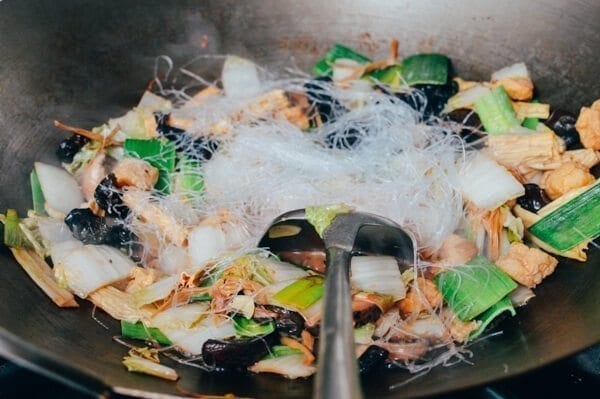 Transfer your Buddha’s Delight to a large bowl and serve with steamed rice!
Transfer your Buddha’s Delight to a large bowl and serve with steamed rice!
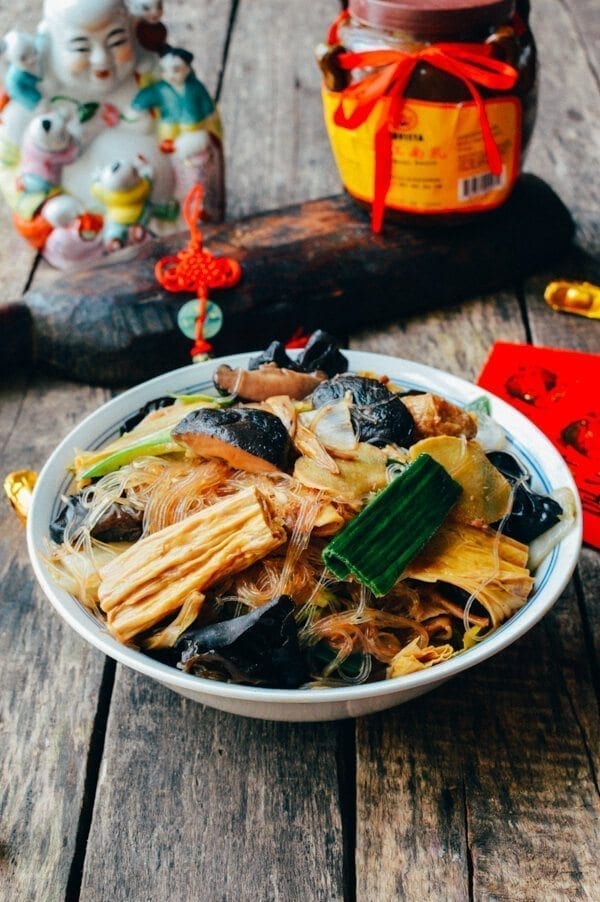
Recipe
Buddha’s Delight (Vegetarian Lo Han Jai)
Buddha’s delight, or lo han jai, is a vegetarian dish well-known in Chinese and Buddhist cuisine. Use our family recipe for an authentic take on this dish.
Serves: 6 servings
Ingredients
- 2 tablespoons canola oil
- 3 slices fresh ginger
- 3 tablespoons red fermented bean curd (hong fu ru)
- 3 cloves garlic (sliced)
- 1 medium leek (cut into 2 inch pieces)
- 5 dried shiitake mushrooms (soaked in warm water and sliced)
- ¼ cup dried wood ears (soaked in warm water; yields about 1 cup)
- ¼ cup dried lily flowers (soaked in warm water with the tips cut off)
- 2 tablespoons Shaoxing wine
- 3 cups Napa cabbage (cut into 2-inch pieces)
- 1 cup fried tofu puffs
- 2 sticks dried bean threads (soaked in warm water and cut into 2-inch pieces)
- 1 teaspoon sesame oil
- 2 tablespoons soy sauce
- 2 teaspoons sugar
- 1 cup water or vegetable stock
- 1 small bundle mung bean noodles (soaked in warm water, drained and cut into shorter pieces with kitchen shears)
Instructions
- Heat your wok over medium-high heat, and add the oil and ginger. Let the ginger caramelize for about 30 seconds without letting it burn. Add the red fermented bean curd and break it up with your spatula. Add the garlic, the white portions of the leeks (reserve to green portion for later), mushrooms, wood ears, and lily flowers. Stir fry for 1 minute. Add the Shaoxing wine and stir fry for another minute.
- Next, add the napa cabbage, fried tofu, and bean threads, and crank up the heat as high as it will go. Stir-fry for 2 minutes. Add the remaining green portion of the leeks, sesame oil, soy sauce, sugar and water or vegetable stock. Stir everything together, cover the wok, and reduce the heat to medium. Cook for 6 minutes, stirring occasionally.
- Uncover the wok and turn the heat back up to high. Add the mung bean noodles, which should soak up most of the liquid. Keep stirring until most of the liquid has evaporated. Transfer to a large bowl and serve with steamed rice!





